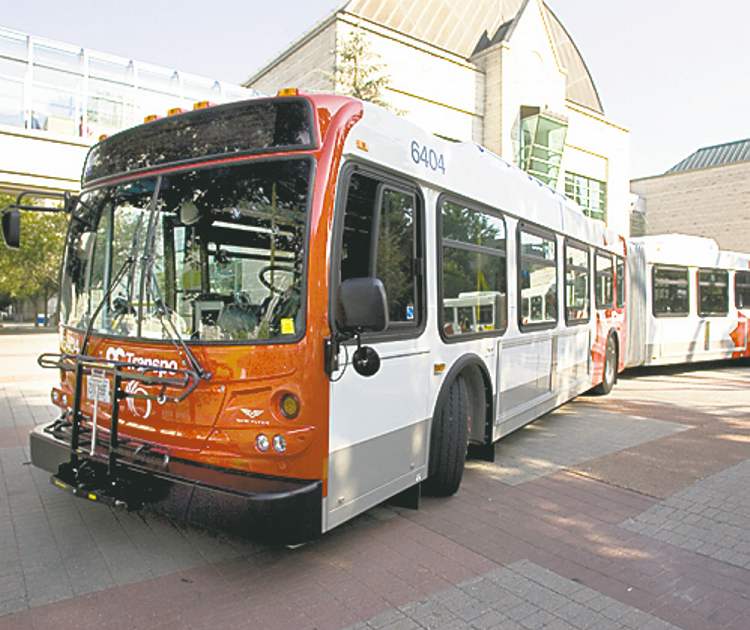How Ottawa got rolling
City faced many of the same roadblocks as Winnipeg
Advertisement
Read this article for free:
or
Already have an account? Log in here »
To continue reading, please subscribe:
Monthly Digital Subscription
$1 per week for 24 weeks*
- Enjoy unlimited reading on winnipegfreepress.com
- Read the E-Edition, our digital replica newspaper
- Access News Break, our award-winning app
- Play interactive puzzles
*Billed as $4.00 plus GST every four weeks. After 24 weeks, price increases to the regular rate of $19.00 plus GST every four weeks. Offer available to new and qualified returning subscribers only. Cancel any time.
Monthly Digital Subscription
$4.75/week*
- Enjoy unlimited reading on winnipegfreepress.com
- Read the E-Edition, our digital replica newspaper
- Access News Break, our award-winning app
- Play interactive puzzles
*Billed as $19 plus GST every four weeks. Cancel any time.
To continue reading, please subscribe:
Add Free Press access to your Brandon Sun subscription for only an additional
$1 for the first 4 weeks*
*Your next subscription payment will increase by $1.00 and you will be charged $16.99 plus GST for four weeks. After four weeks, your payment will increase to $23.99 plus GST every four weeks.
Read unlimited articles for free today:
or
Already have an account? Log in here »
Hey there, time traveller!
This article was published 07/04/2012 (4938 days ago), so information in it may no longer be current.
OTTAWA — A city that’s growing out towards the suburbs.
Transit buses stuck in traffic trying to get in and out of downtown on streets that seem to get busier every day.
A heated municipal debate about how to handle it all.

Sound familiar?
Winnipeg’s transit problem isn’t unique, says the man in charge of designing the public transit system in the nation’s capital.
“What Winnipeg is doing now is almost identical to what we did in 1983,” said Pat Scrimgeour, the manager of transit service design for OC Transpo, Ottawa’s transit department.
In the 1970s, Ottawa was growing quickly and the number of jobs in the downtown soared, said Scrimgeour. City council decided not to build new roads into downtown. Instead, it would find new ways to move people. Hence, the rapid transit system was born.
In Ottawa, bus rapid transit is referred to as the Transitway, a network of high-speed bus lanes and bus-only roads that criss-cross the city. The design was started in the 1970s, and the first legs opened in 1983. Nearly two decades later, the city is still growing and the Transitway is still a work in progress.
The bus-only rapid transit corridors were built on disused railway lines, on land that had been set aside in the 1950s and 1960s for future freeways and other land the city acquired. Connecting the corridors are bus-only traffic lanes on major streets, both through downtown and out towards the suburbs. Buses can sail past regular traffic at speeds of 70 to 90 km/h on the Transitway.
Just like Winnipeg, Ottawa considered but rejected an electric train option in the 1970s.
“Ottawa wasn’t that big of a city yet,” said Scrimgeour.
In 2001, a small light-rail component was added. The O-Train runs eight kilometres over five stops and connects the Transitway in the north with Carleton University further south. OC Transpo went with a train for the route mainly because there was already a working track there and it would have been more expensive to move the track to install a bus transit route.
About 250,000 riders use the Transitway every day, and the vast majority of OC Transpo routes use the transitway at some point. The system includes about 7,000 parking spaces at 14 park-and-ride lots in the east, west and south parts of the city. Most of the lots are free and many are packed full by 8 a.m. on workdays.
Transit use in Ottawa has risen faster than in most other cities despite a major strike in 2009 that saw ridership decrease significantly. It bounced back with a record 99.3 million rides in 2010 and is expected to hit 166 million by 2031.
The city is now embarking on its second major transit-system upgrade in two decades.
“We never built a rapid transit network through downtown,” said Scrimgeour. “Now we’re seeing we’re at the upper limit of what the downtown operation can handle.”
The city has rejected building grade-separated transit corridors downtown as too short-sighted.
“We wouldn’t want to spend that money on a 30- to 50-year solution,” Scrimgeour said. “We want a 100-year solution.”
The new Ottawa transit plan calls for a $2.1-billion light-rail system running east-west through Ottawa, including a 2.5-km transit tunnel through downtown. It will have 13 stations and will connect to the Transitway for people who need to travel farther.
The plan is the result of more than a decade of back-and-forth debate, which included former mayor Larry O’Brien cancelling the previous mayor’s LRT plan. The city ended up spending $36.7 million to settle lawsuits over the cancelled project at the same time as it worked on its new LRT strategy.
The federal and Ontario governments have both committed $600 million toward Ottawa’s new light rail system.
Scrimgeour said one thing is clear about Ottawa’s transit system.
“If we didn’t have a rapid transit solution, we would not have the size of city we have now or the size of economy we have now.”
mia.rabson@freepress.mb.ca


